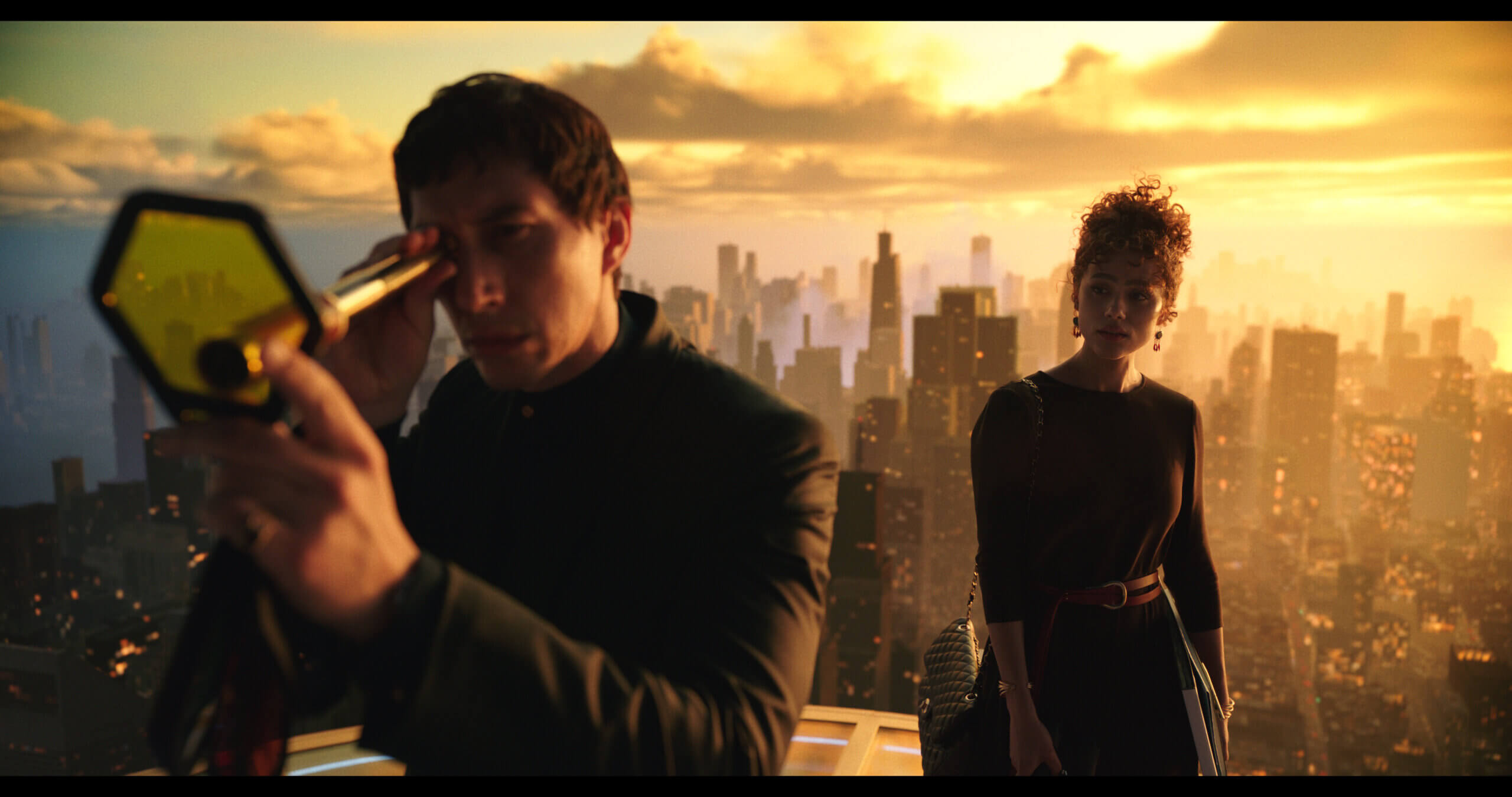‘Megalopolis’ and ‘The Brutalist’ build on Ayn Rand’s ‘Fountainhead,’ then blow up her ideas
Francis Ford Coppola’s and Brady Corbet’s films deconstruct Rand’s master builder

Brady Corbet’s The Brutalist and Francis Ford Coppola’s Megalopolis can be read as rebuttals to Ayn Rand’s Objectivism. Photo by Wikimedia Commons/Lionsgate/Lol Crawley/Canva
In a stroke of simple genius, Ayn Rand laid the cornerstone of her philosophy at the feet of a master builder.
1943’s The Fountainhead introduced the world to a laconic architect named Howard Roark. A beta version of the Objectivist alpha — Rand would formalize her philosophy in the years after the novel’s publication — Roark is a man with no stomach for compromise. He designs great modernist structures and would sooner toil in a quarry or explode his own buildings than cave to the popular taste of the committees funding him. (He’s also a rapist.)
In thuddingly didactic dialogue, Roark, as played by Gary Cooper in the 1949 King Vidor film, makes a case for radical selfishness.
“Everything we have, every great achievement, has come from the independent work of some independent mind,” Roark says, in his much-publicized trial. “The world is perishing from an orgy of self-sacrificing,”
Roark is the prototype for the architect as Great Man, but two new films, each sharing elements of Rand’s story, are defying the archetype’s influence, daring to ask how a deeply personal act of creation, devised with others in mind, might benefit more than just one’s ego.

The most direct challenge to Rand and Roark is in Brady Corbet’s The Brutalist. László Tóth, played by Adrien Brody, in a vast array of quarter zips, is, like Rand, a Jewish immigrant.
A Holocaust survivor from Hungary, Tóth, like Roark, works as a day laborer in between projects. While Roark’s work is scrutinized by investors, who suggest he add Greco-Roman flourishes to office buildings, or balconies to a housing project, Tóth is challenged by a community suspicious of his heritage and his politics — politics, we glean, that would likely be the very sort Rand despised.
Interestingly, Roark and Tóth’s largest commissions are for the public good: Roark takes on a housing project not as an act of charity (“the man who works for others without payment is a slave”), but to erect the structure his way, with no alterations. For this, he is willing to let another architect of lesser vision take the credit.
Tóth’s project is a community center in rural Pennsylvania. He builds a chapel at the insistence of certain funders. To make the structure — a concrete monolith described by one character as a barracks — the way he wants, he sacrifices his fee.
If Roark is a man of the future, Tóth’s constructions, which he hopes might spark revolutions, are rooted in a painful past. (Not to give too much away, but barracks were, indeed, a large part of his inspiration.)
The influence of history is one that Roark rejects out of hand. In an early scene in Vidor’s film, his patrons slap porticos and columns onto his model of a domino-like skyscraper.
“A touch of the new and a touch of the old,” they say. Rather than take the note, Roark leaves to do less glamorous work at a granite quarry.
The blend of the classic and the modern, so detested by Roark, is at the foundation of Francis Ford Coppola’s Megalopolis, which reimagines New York as “New Rome,” and, owing to the neoclassical footprint of Manhattan, changes surprisingly little of the skyline.
Coppola’s answer to Roark is Cesar Catilina (Adam Driver), a Nobel prize-winning inventor and head of the city’s “Design Authority.” Unelected and controversial, he’s a kind of Utopian Robert Moses by way of the failed Roman conspirator Lucius Sergius Catilina. Haunted by the death of his wife — he was accused and acquitted of her murder — Catilina is described at one point as “a man of the future obsessed with the past.”
Catilina’s main project is the titular city of Megalopolis, so named for the possibly unstable building material, Megalon, which he discovered and whose properties are somewhat ambiguous. To build it, he tears down a housing project, a move that prompts protests and an attempt on his life.

Catilina’s vision for Megalopolis is “a perfect school city for the people, able to grow along with them” as they perfect their bodies and minds. Design-wise it’s like nothing else, with spires resembling flower petals and a fluorescent people mover. (Catilina’s process involves a scale model made out of garbage, literally stopping time and young employees forming human pyramids in his office in the Chrysler Building.)
Like Tóth, Catilina’s ultimate aim is to inspire change, viewing his city as the beginning of a great, society-wide debate about the future. Roark, by contrast, lives and works for his own sake, valuing aesthetics above how his buildings might serve the people.
Coppola and Corbet, though drawing from influences beyond Rand’s book or Vidor’s film, are in a sense rebutting them. Though Rand has been dead for over 40 years, her ideas survive her, influencing Silicon Valley and a certain real estate developer turned politician.
The Randian world of The Fountainhead is one where geniuses are hated for their rugged individualism, but persevere by ignoring the attacks and opinions of others. (Those lesser people are “parasites” who steal from what Roark calls “men of unborrowed vision.”)
In The Brutalist, America distrusts immigrants like Tóth and his wife for having their own ideas, and blue bloods accuse them of being leeches. Corbet’s film gives the lie to Objectivism’s ideal of success through defiant individuality, refusal to compromise and seeking one’s own happiness above all. In the United States, the self can often be limited by where it was born and whether it speaks with an accent.
Coppola, meanwhile, has made a paean to the “human family,” that, while prizing one man’s vision, roots its belief in the collective and regards the “insatiable appetite for power of a few men” as spelling the end of empires. For Rand and Roark, it was always self-sacrifice that led to decline and ambition that paved the way for progress.
This debate, with updated language, still animates our politics. It could take years — or maybe just a month or two — to know which future we chose to build, and whether it was built to last.
Megalopolis is in theaters now. The Brutalist is playing at the New York Film Festival Oct. 11 and Oct. 12 followed by a limited release Dec. 20.
A message from our Publisher & CEO Rachel Fishman Feddersen

I hope you appreciated this article. Before you go, I’d like to ask you to please support the Forward’s award-winning, nonprofit journalism so that we can be prepared for whatever news 2025 brings.
At a time when other newsrooms are closing or cutting back, the Forward has removed its paywall and invested additional resources to report on the ground from Israel and around the U.S. on the impact of the war, rising antisemitism and polarized discourse.
Readers like you make it all possible. Support our work by becoming a Forward Member and connect with our journalism and your community.
— Rachel Fishman Feddersen, Publisher and CEO




























